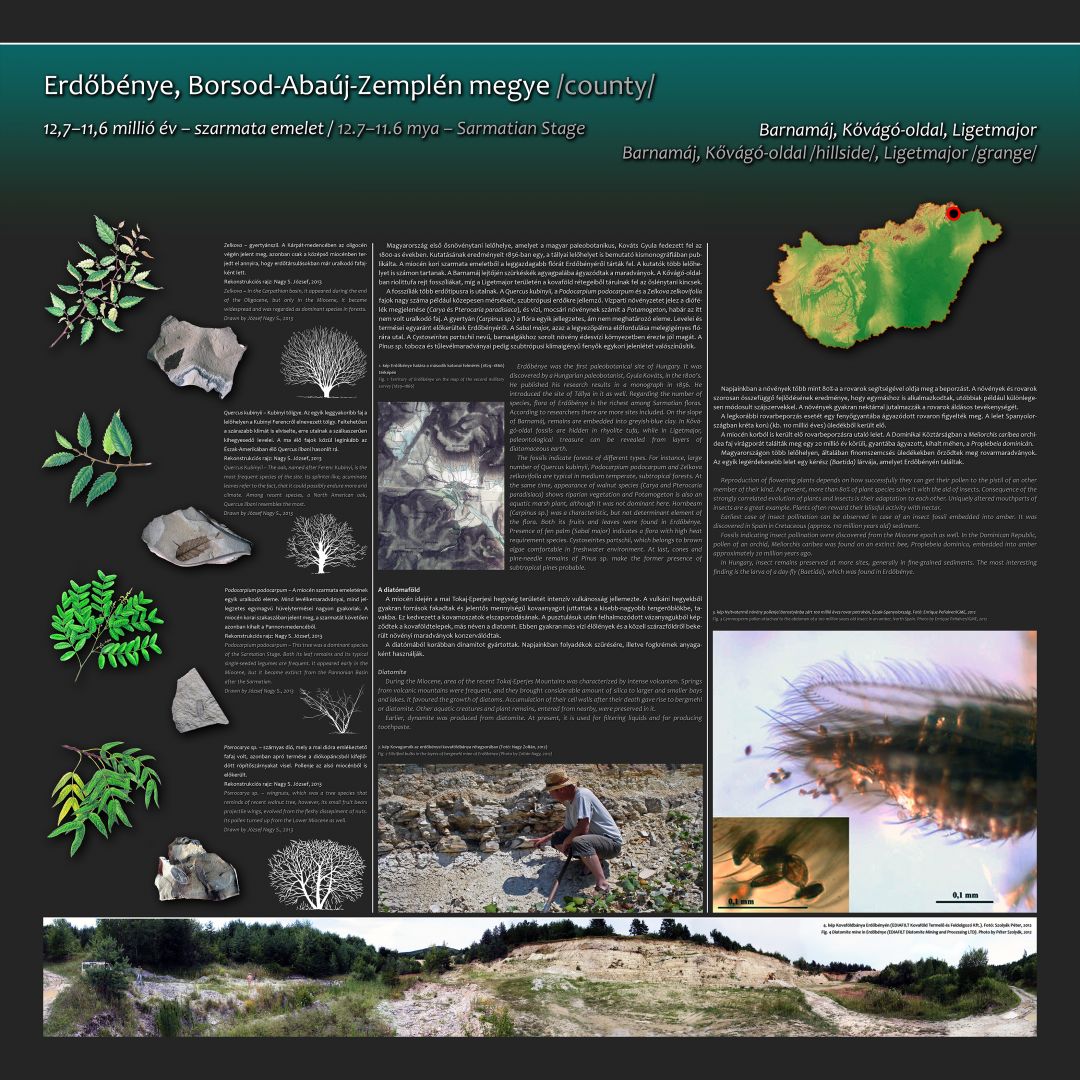FLORA OF THE NEOGENE - 2. view
Erdőbénye, Borsod-Abaúj-Zemplén megye /county/
12.7–11.6 mya – Sarmatian Stage
Erdőbénye was the first paleobotanical site of Hungary. It was discovered by a Hungarian paleobotanist, Gyula Kováts, in the 1800’s. He published his research results in a monograph in 1856. He introduced the site of Tállya in it as well. Regarding the number of species, flora of Erdőbénye is the richest among Sarmatian floras. According to researchers there are more sites included. On the slope of Barnamáj, remains are embedded into greyish-blue clay. In Kővágó-oldal fossils are hidden in rhyolite tufa, while in Ligetmajor, paleontological treasure can be revealed from layers of diatomaceous earth.
The fossils indicate forests of different types. For instance, large number of Quercus kubinyii, Podocarpium podocarpum and Zelkova zelkovifolia are typical in medium temperate, subtropical forests. At the same time, appearance of walnut species (Carya and Pterocaria paradisiaca) shows riparian vegetation and Potamogeton is also an aquatic marsh plant, although it was not dominant here. Hornbeam (Carpinus sp.) was a characteristic, but not determinant element of the flora. Both its fruits and leaves were found in Erdőbénye. Presence of fen palm (Sabal major) indicates a flora with high heat requirement species. Cystoseirites partschii, which belongs to brown algae comfortable in freshwater environment. At last, cones and pine-needle remains of Pinus sp. make the former presence of subtropical pines probable.
